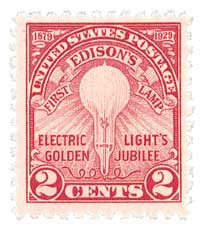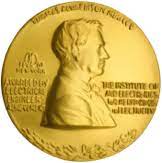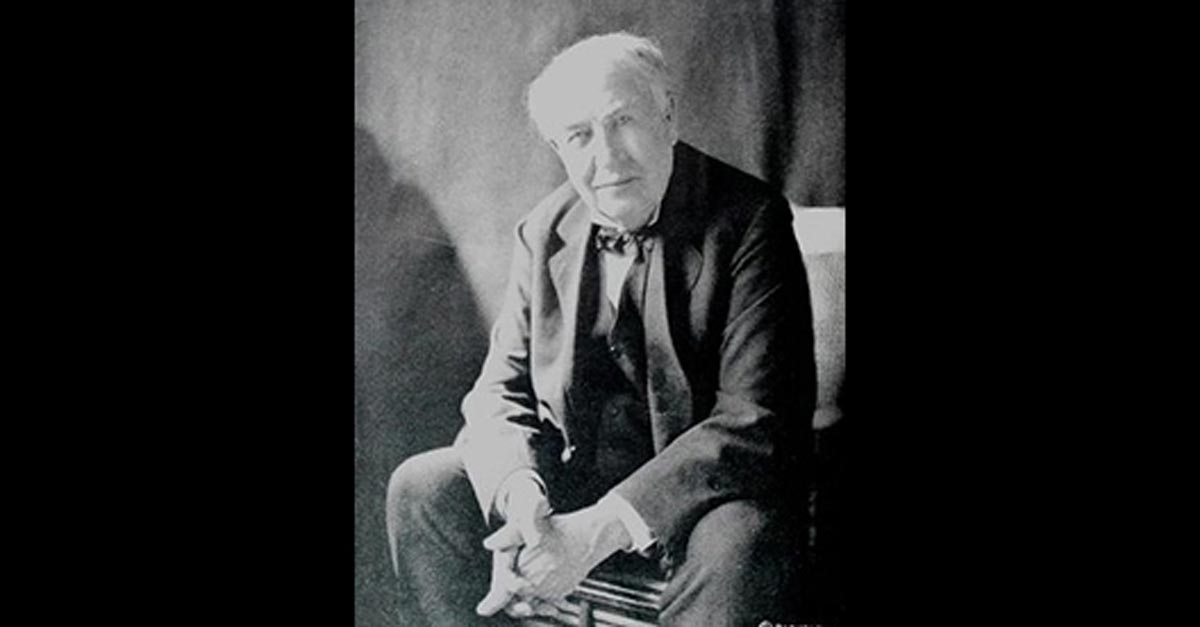On September 4, 1882, Thomas Edison began providing electricity to a portion of New York City, an event often considered the start of the electrical age.

 Edison first grew interested in incandescent electric lighting in mid-1878. A little over a year later he successfully developed the first practical incandescent light. He then set to work developing an entire system to generate, deliver, and utilize electric energy. He developed a parallel circuit, constant voltage dynamo, junction boxes, an underground conduit system, and several other components to run the system.
Edison first grew interested in incandescent electric lighting in mid-1878. A little over a year later he successfully developed the first practical incandescent light. He then set to work developing an entire system to generate, deliver, and utilize electric energy. He developed a parallel circuit, constant voltage dynamo, junction boxes, an underground conduit system, and several other components to run the system.
From the beginning, Edison had planned to institute a full-scale central system in New York City to prove that his system was commercially viable. He set to work on the Pearl Street station, which would become the first permanent central power station to supply incandescent lighting. Edison carefully chose the location of his station, so that it would cover a densely populated area of both commercial and residential properties. The one-quarter square mile area, which came to be known as the First District, was home to the downtown business district and many influential newspapers.
For the Pearl Street station, Edison developed six 27-ton constant-voltage dynamos that could each supply about 1,200 lamps. He also had to install 80,000 feet of underground conductors. Once the project was complete, Edison was ready to show it to the world. On September 4, 1882, he stood in the office of J. Pierpont Morgan of Drexel, Morgan & Company. He signaled his electrician at the station to close the switch, after which the power was delivered to the people in the First District. About 400 lamps were lit on that first day.
 Though the event is now considered a monumental moment in history, at the time it was largely uncelebrated. The New York Times briefly mentioned it in their Miscellaneous City News section. While the station wasn’t an instant financial success, it proved Edison’s system worked. It also expanded significantly—to 10,000 lamps serving 513 customers within a year. Edison built more stations in other parts of New York City and licensed similar systems for installation throughout America, Europe, and Japan over the next decade.
Though the event is now considered a monumental moment in history, at the time it was largely uncelebrated. The New York Times briefly mentioned it in their Miscellaneous City News section. While the station wasn’t an instant financial success, it proved Edison’s system worked. It also expanded significantly—to 10,000 lamps serving 513 customers within a year. Edison built more stations in other parts of New York City and licensed similar systems for installation throughout America, Europe, and Japan over the next decade.
IEEE Edison Medal Honors Imagination
 The motivation for most scientific and technological advances has been derived from man’s imagination and his dedicated desire to achieve a better standard of living. Thomas Alva Edison was endowed with many of those qualities and characteristics, which are so necessary to bridge the gap between imagination and realization. On 11 February 1904, a group of Mr. Edison’s friends and associates created a medal in his name to commemorate the achievements of a quarter of a century in the art of electric lighting. In their words, “The Edison Medal should, during the centuries to come, serve as an honorable incentive to scientists, engineers, and artisans to maintain by their works the high standard of accomplishment set by the illustrious man whose name and feats shall live while human intelligence continues to inhabit the world.” The IEEE Edison Medal has been presented since 1909.
The motivation for most scientific and technological advances has been derived from man’s imagination and his dedicated desire to achieve a better standard of living. Thomas Alva Edison was endowed with many of those qualities and characteristics, which are so necessary to bridge the gap between imagination and realization. On 11 February 1904, a group of Mr. Edison’s friends and associates created a medal in his name to commemorate the achievements of a quarter of a century in the art of electric lighting. In their words, “The Edison Medal should, during the centuries to come, serve as an honorable incentive to scientists, engineers, and artisans to maintain by their works the high standard of accomplishment set by the illustrious man whose name and feats shall live while human intelligence continues to inhabit the world.” The IEEE Edison Medal has been presented since 1909.


